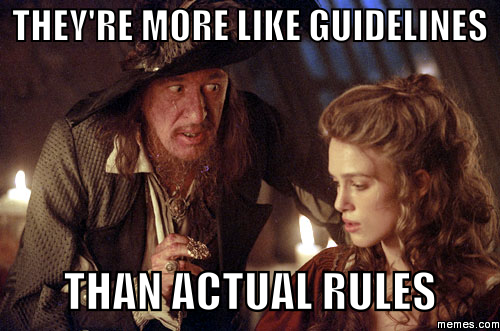
New year, new economy. What’s on Theresa May’s to-do list?
You couldn't accuse her of keeping quiet anymore. From a flurry of announcements over the UK's relationship with the US, Brexit and now her industrial strategy, we're starting to get a better picture of what Theresa May's vision for the UK is.
The government has called it a 'modern industrial strategy fit for a global Britain'. But what does that even mean, and is it really that different from what's come before?
What even is an industrial strategy?
The industrial strategy is a document outlining how the government plans to use its (the UK's) money and influence to help workers and businesses become more productive.
It does seem like the UK needs a bit of a helping hand. The gap between how valuable an hour of our work is compared to an hour of work in say, France or Germany, is growing… in the wrong direction (what’s known as the 'productivity gap').
The UK government spends about £734.4bn a year on the economy – and unlike other big spenders who might be, for example, running businesses for profits, their only purpose is to make the economy work better. So, if it puts its mind to it, that’s a lot of potential to help make that ‘productivity gap’ a little smaller.

What does the strategy say?
It doesn’t have too much detail. Theresa May has summarized the whole thing into a 10 point economic to do list, which at first glance, is pretty hard to argue with:
- Investing in science, research and innovation
- Developing skills
- Upgrading digital, energy, transport, water and flood defence infrastructure
- Ensuring businesses can access the finance and management skills they need to grow
- Improving government procurement
- Encouraging trade and inward investment
- Delivering affordable energy and moving to a low-carbon economy
- Cultivating world-leading sectors
- Driving growth across the whole country
- Creating the right institutions to bring together sectors and places

So what does that all reaallllly mean?
Theresa May’s strategy is different from the ones we’ve seen before in four main ways.
The approach
Essentially, Theresa May wants to use a team of experts to find out what’s trending on the industrial newsfeed. So far, they’ve come up with life sciences, creative industries, electric cars, and what they’re calling ‘industrial digitalization’ (that’s 5G. 5. G.)
All this is part of a bigger plan to put a stronger emphasis on ‘industrialization’ of the economy – developing industries and infrastructure in a big way, through things like setting up Institutes of Technology across the country.
The emphasis on greater state involvement
May wants the government to play a bigger role in backing businesses and helping them overcome challenges so they can be part of the "world-leading sectors" of tomorrow, whatever that means. However, at the moment under EU law there is a cap on how much governments can directly aid companies. We'll have to wait for the final terms of Brexit to see how this plays out.
The focus on the North of England
The term ‘Northern Powerhouse’ was coined by the last Chancellor, George Osborne, it basically describes a group of major cities in the north who used to represent an industrial center, but feel they’ve been neglected in recent years. May wants to help them steam ahead and is sending £556m their way in this strategy to do so – £130m of that is going to Manchester alone.
Low cost carbon transport
Mega transport projects like high speed rail line HS2 and new terminals at Heathrow are getting a lot of attention. She will be giving the go ahead to a new nuclear power station at Hinkley and putting £390m in to ‘future transport’. That means research into driverless cars and how to make them not just low emission, but ULTRA low emission.
So what's in it for me?
Well if you like maths and science, then the answer is lots. If you like maths and science and live in Manchester, then you’re going to be like…

If not, then it may take a while to feel the benefits of it all. The infrastructure projects popping up around the country will take a few years to come online, particularly a new nuclear power station at Hinkley. Plus, the government still needs to decide on the full set of sectors it will help which will take another 12 weeks of negotiations...
Is any of this actually going to happen?
Watch this space. Businesses will soon be presenting strong cases to the government for trade deal preferences and funding for their sectors, just in time for Article 50 to be triggered.
May clearly has big plans for her new-found freedom from Europe, but until then...




